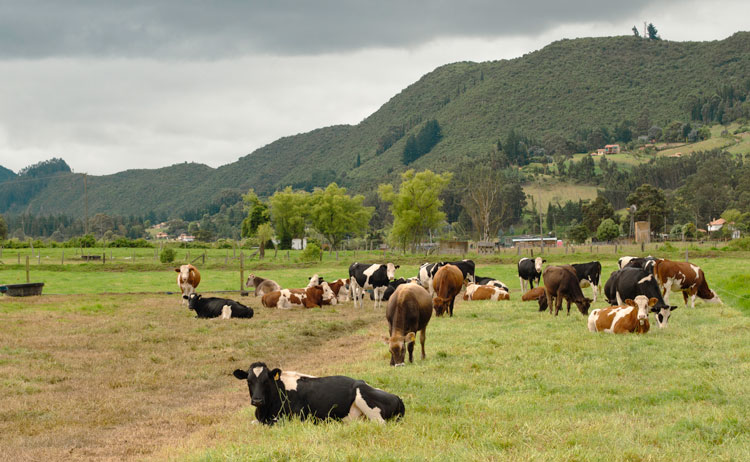
This summer was Earth’s hottest on record. For dairy cattle around the world and the farmers that take care of them, that heat made producing high-quality milk more challenging, and the trend of more days of high heat is only predicted to continue in the coming decades.
Andrea Vitali, a professor at the Universitá della Tuscia in Italy, explained during the World Dairy Summit that the risk of heat stress is expected to rise at all latitudes around the globe up to the year 2100, where his group’s research cut off. They studied climate data from the past 30 years and made projections for the next 80 based on three planet-warming scenarios: low, moderate, and high. Based on the temperature humidity index (THI) thresholds they established for heat stress at various latitude levels, they estimated that subtropical and equatorial-tropical environments could experience 30 to 90 more days each year of heat stress.
In the U.S., there were 110 days in 2020 that averaged a THI over 65, a baseline indication of heat stress, added Torsten Hemme, chairman and founder of IFCN, the Dairy Research Network. By 2050, there are expected to be 17 more days over that limit in the U.S.
This makes combatting heat stress a critical concern of the global dairy industry. Cows that are heat stressed produce less milk, have more mastitis, contract more illnesses, and reproduce less efficiently. Globally, heat stress costs dairy $13 billion, continued Hemme, and it could rise to $29.7 billion by 2050. That number doesn’t even account for animal deaths from heat.
What can we do?
There are many tools the industry has to address this need, ranging from facility adjustments like ventilation and cooling to genetic changes such as selection for heat tolerance or using different breeds. Anything a farm can do to ease the stress of high heat — which will vary around the world on farms of various sizes and capabilities — will make a difference.
“Even minimal heat abatement is incredibly helpful,” said Mario Mondaca Duarte of VES Artex. “Taking one step toward heat stress control may open the doors to more opportunities.”
Shade and water are the first two basic ways to help cows combat heat. They may sound simple, but in some places, it is still a necessary reminder. Providing some form of shade should be the first step.
Then, provide sufficient water to help the cows’ bodies cool themselves. “Cows do a good job of panting, but they can’t do that without water,” Mondaca Duarte continued.
In barns, airspeed is crucial. Aim for 40 to 60 exchanges per hour, and make sure it reaches the cow’s level when laying down.
On the genetic side, farmers in the U.S. and other countries are gaining access to the SLICK gene that allows animals to grow a more heat-tolerant hair coat. In other places around the world, indigenous cattle and buffalo are making more inroads because they have higher heat tolerances than Holstein cattle, said Chanchal Waghela from India’s National Dairy Development Board.
It may require adjustments in how we look at dairy farming, but addressing heat stress is critical for the dairy industry to supply the nutrients it has to populations around the world. Better tackling that problem is a win for cows, farmers, the climate, and the consumer, said Hemme.








